When to Fertilize Your Lawn: Best Timing for Optimal Growth
- March 7, 2024
- 0 comment
Fertilizing your lawn is akin to feeding it; providing it with the essential nutrients it needs to grow thick, lush, and green. However, the timing of fertilization is crucial to maximize its health and beauty. This article explores the ins and outs of when to fertilize your lawn to ensure it thrives.
The First Step in Timing your Fertilizer Application is to Identify your Grass Type
Kentucky Bluegrass
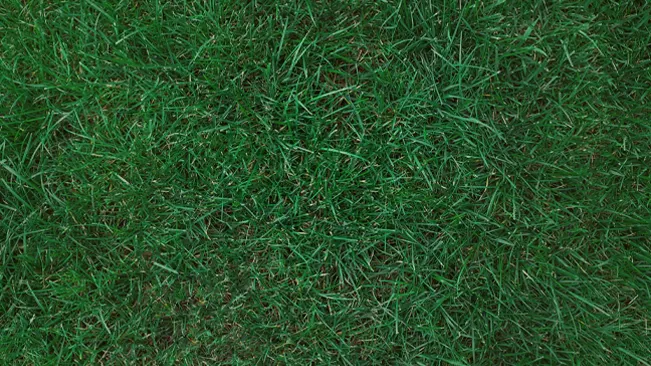
A staple in cooler northern climates, Kentucky Bluegrass is prized for its striking deep green hue and delicate texture, creating a lush, dense lawn. Its blades, notable for their unique boat-shaped tips, contribute to a smooth, uniform surface that’s both visually appealing and comfortable underfoot. This grass type excels in environments with ample moisture and cool temperatures, recovering well from periods of dormancy with vigorous spring growth. Its extensive root system allows for effective self-repair and resilience, making it an excellent choice for high-traffic areas and family yards.
Bermuda Grass
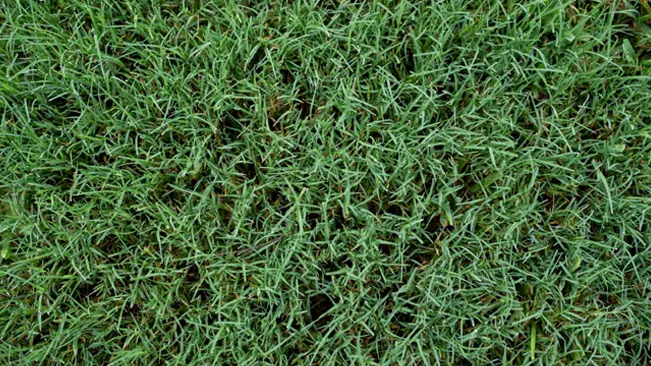
Flourishing in the warmth of southern climates, Bermuda Grass is the epitome of resilience, withstanding both scorching heat and dry conditions. Its fine-textured, grayish-green blades spread quickly, creating a dense, hardy turf ideal for sports fields and high-use lawns. Bermuda’s aggressive growth habit enables it to recover rapidly from damage, while its short blades with rough edges give it a distinctive look. This grass’s durability and low water requirements make it a sustainable choice for regions prone to drought.
Tall Fescue
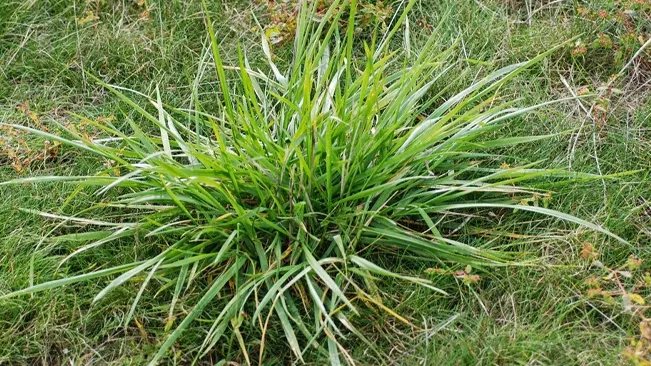
Known for its robustness, Tall Fescue sports coarsely textured, deep green blades that stand tall and wide. This grass variety adapts to a broad range of climates, thriving in both the cool conditions of the north and the warmth of the south. Its deep root system enables it to access moisture in dry spells, contributing to its drought tolerance. Tall Fescue’s resilience to foot traffic and its ability to maintain color and density in various conditions make it a popular choice for both residential lawns and public spaces.
St. Augustine Grass
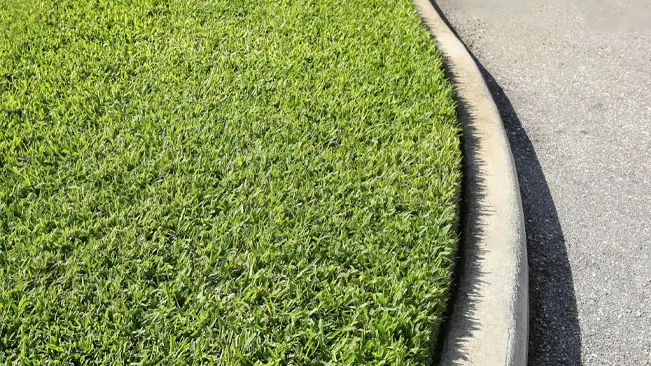
With its broad, flat blades showcasing a vibrant deep green, St. Augustine Grass is a favorite in warm, coastal regions. This grass thrives in sandy soils and embraces the shade, offering a solution for lawns with significant tree cover. Its thick, carpet-like growth habit helps suppress weeds and withstand moderate foot traffic. While St. Augustine requires more water and care than some other warm-season grasses, its aesthetic appeal and adaptability to shaded areas justify the effort in suitable climates.
Zoysia Grass
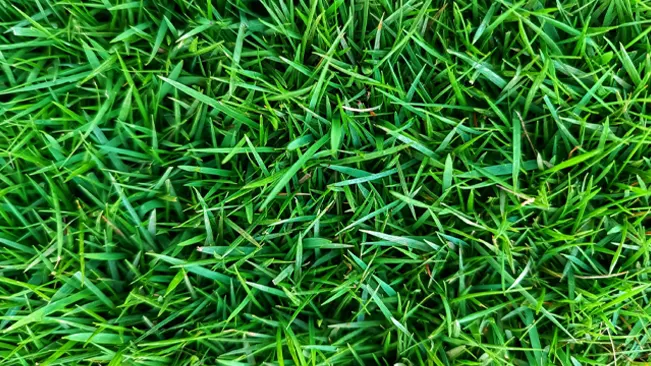
Zoysia is celebrated for its fine to medium texture and lush green color, which together create a stunning, manicured lawn. Exceptionally drought-resistant, Zoysia establishes slowly but forms a dense, weed-resistant turf that excels in high-traffic situations. Its adaptability to different soil types and its tolerance for partial shade make it a versatile choice for homeowners in warmer regions seeking a low-maintenance, durable lawn.
The Science of Soil
A soil test can guide gardeners, farmers, and land managers in making informed decisions about fertilizer application and soil amendments. By understanding the specific needs of your soil, you can tailor your gardening or farming practices to enhance soil fertility, avoid over-fertilization, and ensure optimal plant growth. This approach not only contributes to the sustainability of the land but also promotes a more efficient use of resources, leading to healthier plants and higher yields.

Furthermore, a soil test can reveal underlying issues such as nutrient deficiencies, toxicities, or pH imbalances, allowing for timely interventions to correct these problems. This proactive measure can prevent potential plant health issues and soil degradation, ensuring a thriving ecosystem.
Seasonal Fertilization Guide
Spring
- Early Spring: Focus on revitalizing your lawn as it emerges from dormancy. Apply a balanced, slow-release fertilizer that contains nitrogen, phosphorus, and potassium (N-P-K) to encourage strong root growth and a rapid green-up. In regions where crabgrass is a problem, consider a combination product that includes a pre-emergent herbicide.
- Late Spring: As temperatures rise and growth accelerates, your lawn may benefit from an additional application of nitrogen-rich fertilizer to sustain its lush, green appearance. Monitor for signs of weed growth and apply post-emergent herbicides as necessary.
Summer
- Early Summer: This period demands high resilience from your lawn due to heat and potential drought. Use a fertilizer with a higher potassium content to enhance stress tolerance and disease resistance. If possible, opt for slow-release formulas to reduce the risk of burning the grass.
- Mid to Late Summer: Evaluate your lawn’s condition before applying more fertilizer. If growth has slowed significantly or your area is experiencing drought, it might be best to skip this application to avoid stressing the grass.
Fall
- Early Fall: Fertilization is critical in the fall to recover from summer stress and prepare for the coming winter. Apply a balanced fertilizer that will support root growth and nutrient storage. This application is crucial for cool-season grasses, as it fuels their primary growth period.
- Late Fall: For cool-season grasses, a final application of a potassium-rich, low-nitrogen fertilizer can help harden off the grass before winter, improving cold tolerance and reducing the risk of winter injury. In warmer climates, this may be the time to transition to a winterizer product for warm-season grasses.
Winter
- In most regions, winter is a time for lawn rest, and fertilization is not typically recommended. However, in very mild winter regions where grass remains somewhat active, a light application of a balanced, slow-release fertilizer may be beneficial. Always avoid fertilizing frozen ground to prevent runoff and environmental damage.
Additional Tips
- Soil Testing: Begin with a soil test to determine your soil’s nutrient levels and pH. This will help tailor your fertilization program to your specific needs.
- Follow Instructions: Always follow the manufacturer’s instructions on fertilizer packaging to avoid over-fertilization, which can harm your lawn and the environment.
- Watering: Water your lawn after fertilizing to help dissolve the fertilizer and carry the nutrients into the soil.
- Equipment: Use a spreader for even application, and calibrate it according to the fertilizer product’s instructions.
Avoid Fertilizing Dormant Grass
Fertilizing dormant grass often results in wasted resources and increased stress on your lawn. When grass is dormant, it cannot effectively use the nutrients provided by fertilizer, leading to the potential waste of both the product and your effort. Unused fertilizer may remain in the soil, where it can leach into water sources and cause contamination, or it might evaporate, contributing to air pollution. Additionally, fertilizers, particularly those high in nitrogen, are designed to stimulate growth. Applying these to a dormant lawn can force the grass out of its natural resting phase, placing undue stress on it as it tries to grow under adverse conditions. This unnecessary strain can weaken the grass, leaving it more vulnerable to diseases, pests, and further environmental stresses.
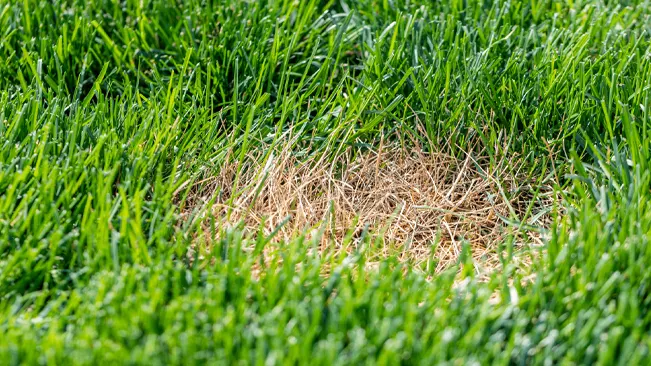
Moreover, applying fertilizer to a lawn that’s not actively growing can increase the risk of chemical burn and promote weed growth. Dormant lawns have a reduced capacity to absorb and process the nutrients from fertilizers, raising the risk of the chemicals burning the grass, which can lead to unsightly brown, dead patches that may take months to recover. On the other hand, weeds are less discriminating and may thrive on the fertilizer intended for your grass, leading to a more pronounced weed problem once the growing season starts. Thus, it’s crucial to match fertilization efforts with the active growth periods of your lawn to ensure the health and beauty of your grass while minimizing potential negative impacts.
How to Fertilize Your Lawn?
Choose the Right Fertilizer
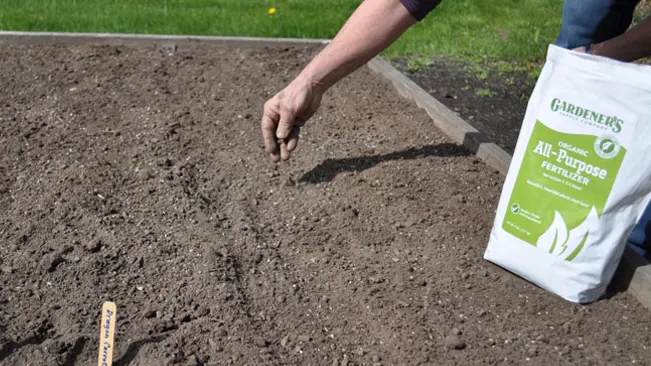
Choosing the right fertilizer is crucial for the health and appearance of your lawn, and this decision should be informed by a soil test. The results of this test will guide you in selecting a fertilizer with the appropriate N-P-K ratio, which stands for nitrogen, phosphorus, and potassium. Nitrogen is essential for encouraging vibrant leaf growth, phosphorus supports robust root development, and potassium is key to the overall health of your grass. In addition to the nutrient composition, it’s also important to consider the release type of the fertilizer. Slow-release fertilizers are designed to nourish your lawn gradually over time, minimizing the risk of burning the grass and reducing the need for frequent applications. On the other hand, fast-release fertilizers provide a quick boost of nutrients to your lawn, which can be particularly beneficial at certain times of the growing season. Each type has its advantages, and your choice will depend on the specific needs of your lawn and your maintenance preferences.
Know Your Lawn
Grass Type
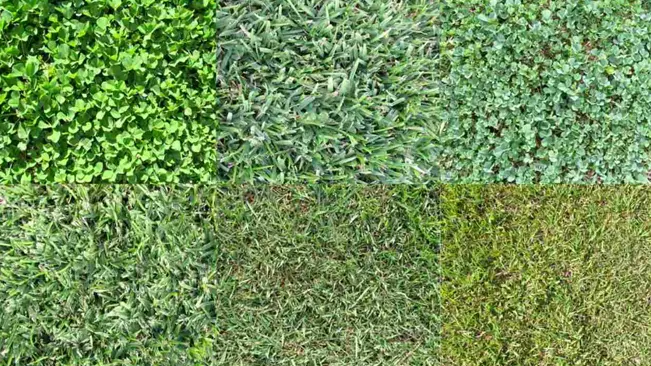
The first step in lawn care is identifying the type of grass you have, as this dictates much of your lawn maintenance routine. Cool-season grasses, such as Kentucky bluegrass and fescue, thrive in the cooler temperatures of spring and fall, typically found in northern regions. They require fertilization during these peak growth periods to prepare for summer dormancy and to recover in fall for winter dormancy. Warm-season grasses, including Bermuda and Zoysia, flourish in the heat of summer and are common in the southern United States. These grasses benefit most from fertilization in late spring or early summer when their growth cycle is in full swing. Understanding your grass type is crucial because it determines not only the best times for fertilization but also the specific nutrient needs of your lawn.
Soil Test
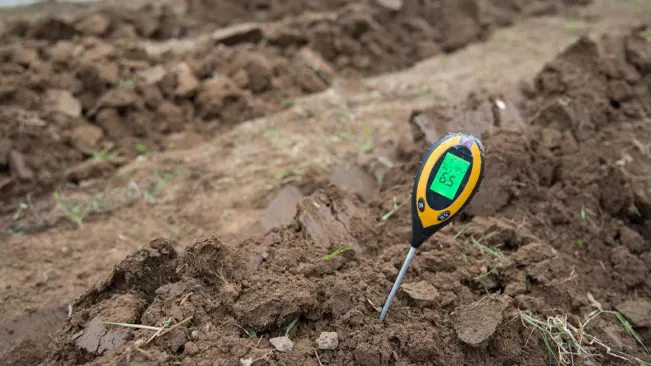
A soil test is an essential tool for effective lawn care, offering a clear picture of your soil’s health by measuring nutrient levels and pH balance. This analysis reveals deficiencies or excesses in essential nutrients such as nitrogen, phosphorus, and potassium, which are critical for plant growth. The pH level, indicating the soil’s acidity or alkalinity, significantly affects nutrient availability to your grass. Conducting a soil test before applying fertilizer helps tailor your lawn care regimen to the specific needs of your soil, ensuring you provide the right nutrients in the correct amounts. This not only promotes a healthier lawn but also prevents the environmental impact of over-fertilization, such as nutrient runoff into waterways. Soil testing kits are widely available at garden centers, or you can seek the services of a local cooperative extension office for a more comprehensive analysis.
Common Fertilization Mistakes
- Over-Fertilizing: Applying too much fertilizer can lead to rapid, weak growth, making the grass more susceptible to diseases and pests. It can also result in fertilizer burn, leaving unsightly brown patches on the lawn.
- Under-Fertilizing: Not applying enough fertilizer can lead to a lawn that lacks vigor, is thin, and has poor color. This makes it easier for weeds to invade and establish themselves, as the grass isn’t dense enough to outcompete them.
- Incorrect Timing: Fertilizing at the wrong time can be ineffective or even harmful. For example, fertilizing cool-season grasses in the heat of summer can stress them, while fertilizing warm-season grasses too early in spring can encourage premature growth that could be damaged by a late frost.
- Using the Wrong Type of Fertilizer: Different grass types have specific nutrient requirements. Using a fertilizer with the wrong N-P-K ratio or one that doesn’t suit your soil’s pH can hinder grass growth and health.
- Uneven Application: Applying fertilizer unevenly can lead to patchy growth, with some areas of the lawn growing more vigorously than others. This can create an uneven, unattractive appearance.
- Ignoring Soil Health: Soil health is crucial for effective fertilization. Neglecting to conduct a soil test before fertilizing can result in an imbalance of nutrients, with some being in excess and others in deficiency.
- Fertilizing Wet Grass: Applying fertilizer to wet grass can cause the granules to stick to the blades, leading to burns. It’s best to fertilize when the lawn is dry, and then water lightly to help the fertilizer reach the soil.
- Neglecting Watering After Application: Failing to water your lawn after applying granular fertilizer can prevent the nutrients from reaching the soil, reducing the effectiveness of the fertilization.
- Fertilizing Before Heavy Rain: If heavy rain is expected, postpone fertilizing. Rain can wash away the fertilizer before it has a chance to be absorbed, leading to runoff that can pollute waterways.
- Overlooking Environmental Impact: Using fertilizers without considering their environmental impact can lead to pollution of local water bodies due to runoff. Opting for slow-release and organic fertilizers can minimize this risk.
Conclusion
In conclusion, proper lawn fertilization is crucial for achieving a lush, healthy, and vibrant lawn, but it requires careful attention to avoid common pitfalls. Key to success are understanding your lawn’s specific needs, choosing the right type of fertilizer, applying it at the correct time, and using the appropriate amount. It’s essential to conduct a soil test before starting your fertilization regimen to tailor your approach to your lawn’s unique requirements. Equally important is the application technique to ensure even coverage and prevent damage to the grass. Moreover, environmental considerations should not be overlooked; responsible fertilization practices not only benefit your lawn but also protect the broader ecosystem. By avoiding common fertilization mistakes and adopting a mindful approach, you can ensure your lawn remains a beautiful and sustainable part of your home’s landscape.
FAQs
1. How often should I fertilize my lawn?
Typically, it’s recommended to fertilize your lawn 2-4 times a year, depending on the type of grass and your local climate. Cool-season grasses benefit from fertilization in early spring and fall, while warm-season grasses thrive with late spring through summer applications.
2. What is the best time of day to fertilize my lawn?
The best time of day to fertilize is in the morning or late afternoon to avoid the fertilizer evaporating or burning the grass under the midday sun. Ensure the lawn is dry to prevent granules from sticking to wet blades.
3. Can I fertilize my lawn before it rains?
It’s best to avoid fertilizing right before heavy rain, as it can wash away the fertilizer before it absorbs into the soil. However, a light rain after fertilizing can help dissolve the fertilizer and carry it to the roots.
4. What does the N-P-K ratio on fertilizer bags mean?
The N-P-K ratio represents the percentages of nitrogen (N), phosphorus (P), and potassium (K) in the fertilizer, key nutrients for lawn health. Nitrogen promotes green, leafy growth; phosphorus supports root development; and potassium enhances overall plant health.
5. How do I choose the right fertilizer for my lawn?
Base your choice on a soil test, which will indicate your lawn’s nutrient needs. Also, consider the type of grass and the season to select a fertilizer with the appropriate N-P-K ratio and release type (slow or fast).
6. Is it necessary to water the lawn after fertilizing?
Yes, watering lightly after applying granular fertilizer helps to move the nutrients off the grass blades and into the soil, reducing the risk of burning the grass and ensuring the nutrients reach the roots.
7. Can I fertilize a newly seeded lawn?
Yes, but wait until the new grass has been mowed a few times to ensure it’s established enough to handle the fertilizer. Use a starter fertilizer with a higher phosphorus content to encourage root growth.
8. What should I do if I accidentally over-fertilize my lawn?
Water the area thoroughly to dilute the concentration of fertilizer in the soil and help prevent burn damage. Keep the lawn well-watered over the next few days to aid recovery.
9. How do I avoid fertilizer burn?
Follow the recommended application rates on the fertilizer package, use a spreader for even distribution, and avoid fertilizing during hot, dry weather to minimize the risk of burning your lawn.
10. Are organic fertilizers better than synthetic ones?
Organic fertilizers release nutrients more slowly and improve soil health over time, which can be beneficial for your lawn and the environment. However, they generally take longer to see visible results compared to synthetic fertilizers. The best choice depends on your lawn care goals and environmental preferences.

Joel Cunningham
Forestry AuthorI'm Joel Cunningham, an expert in pruning and weed management with over a decade of experience. My skills are rooted in formal training and extensive practice, focusing on advanced pruning techniques and efficient weed control. I'm known for my quality work, precision, and deep understanding of plant health and soil dynamics. My contributions extend to educational initiatives where I share sustainable practices and advice, establishing myself as a reliable and authoritative figure in the gardening community.













Leave your comment